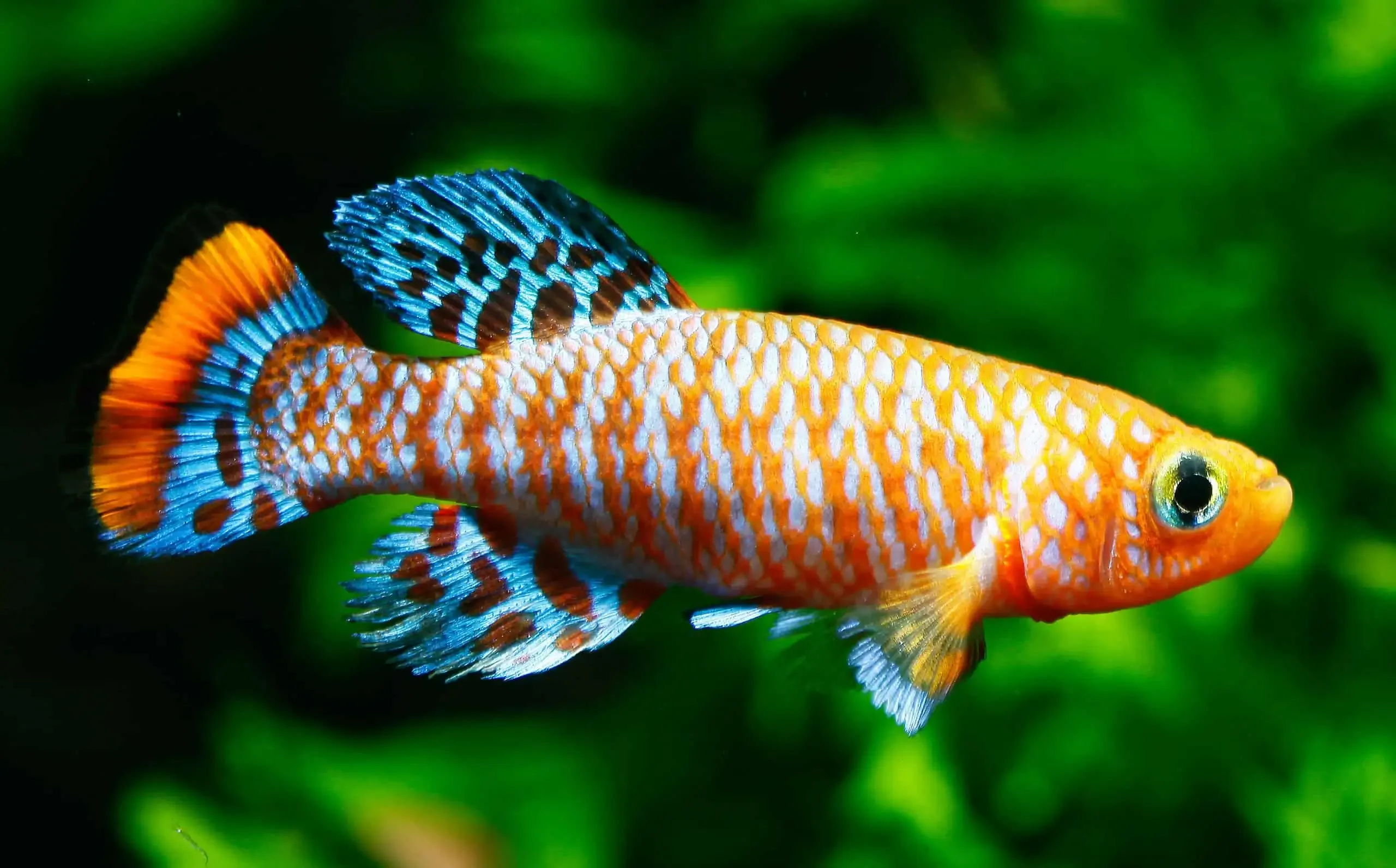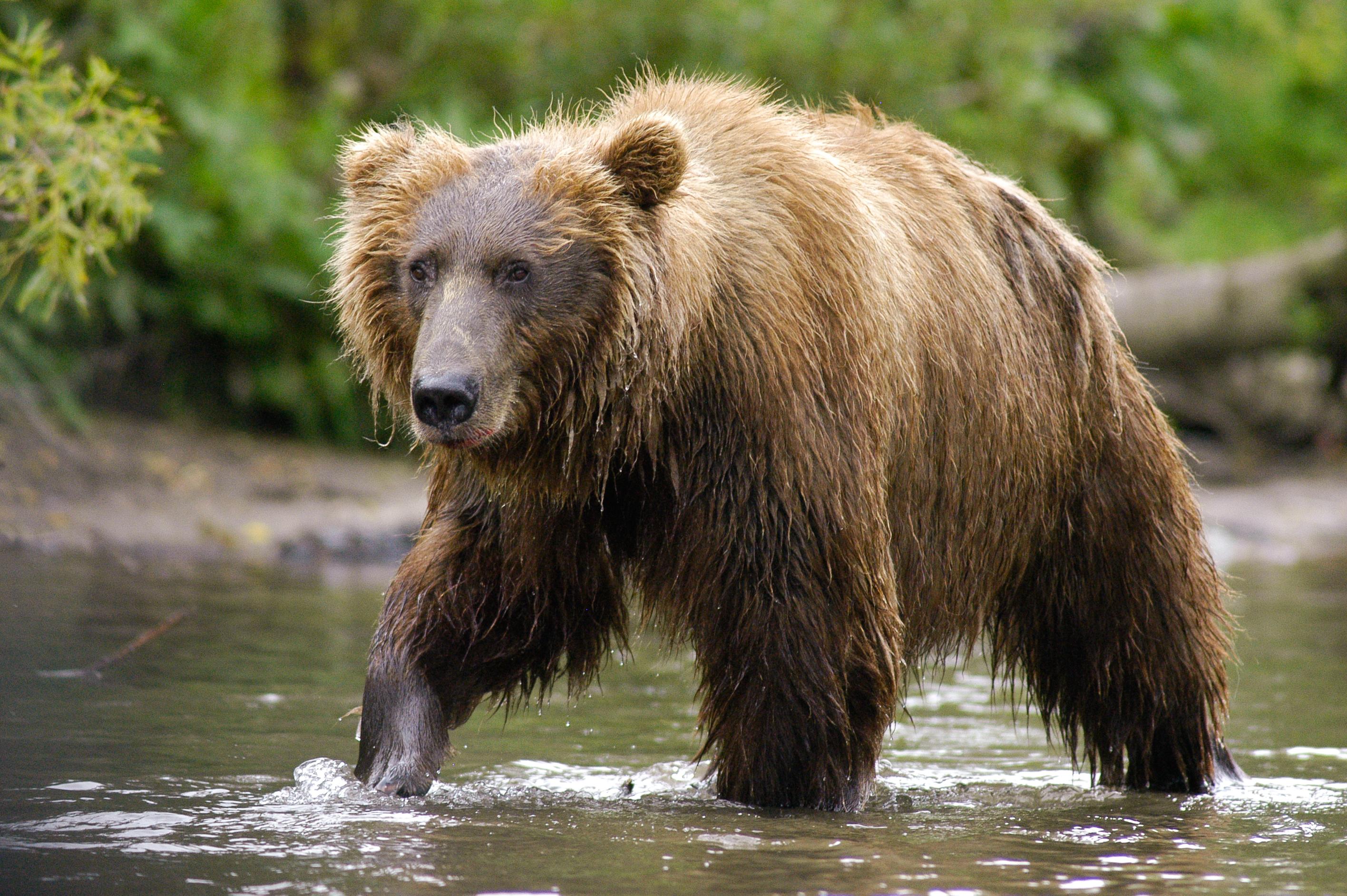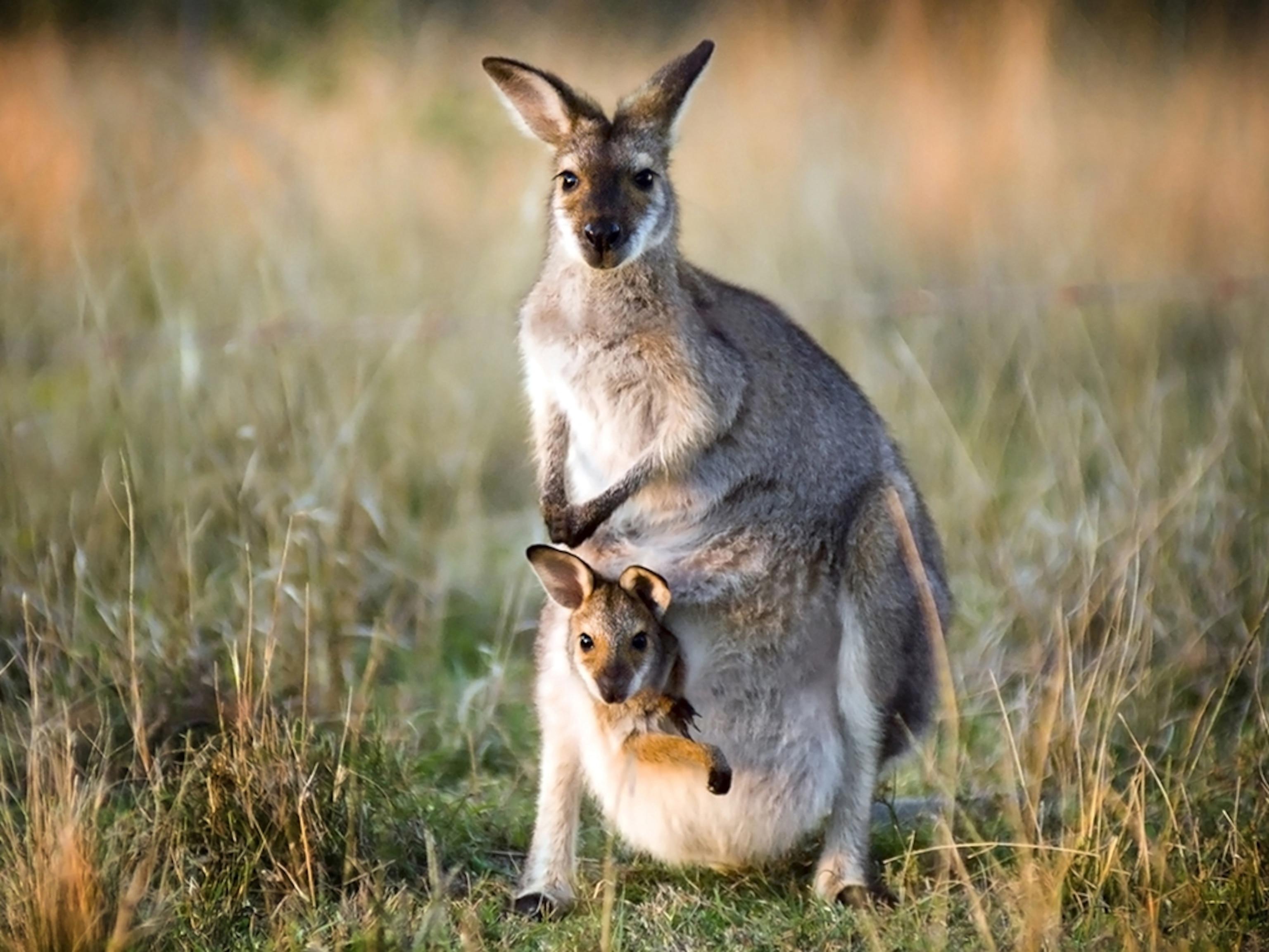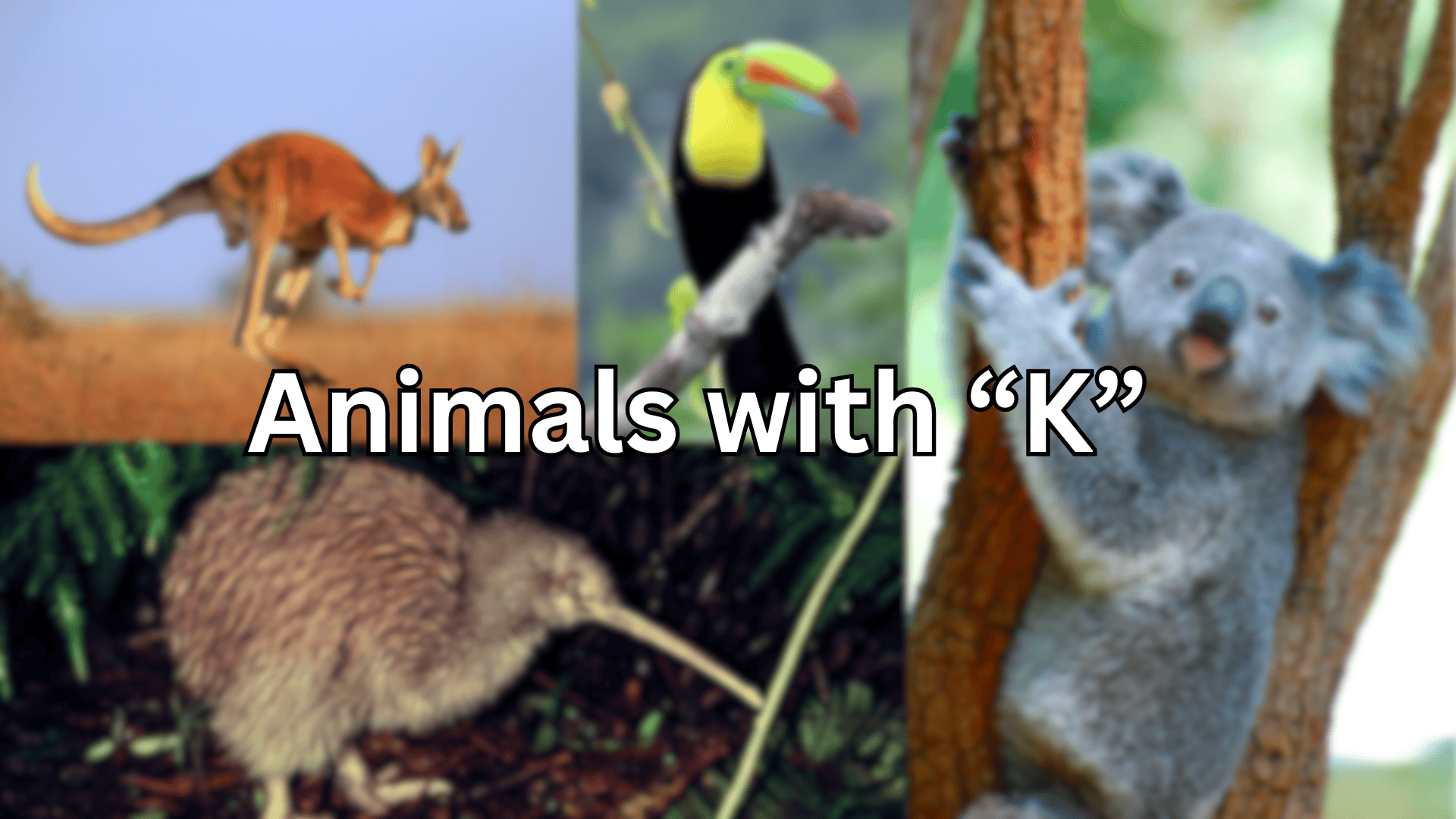
Kick off your wildlife safari with our ultimate guide of animals beginning with the letter “K”!
This collection features enrapturing creatures, from the iconic kangaroo bouncing through the Australian outback to the mysterious katydid singing in twilight forests.
Plunge into the kingdom of “K” animals with our expertly researched profiles, which cover each creature’s natural habitat, scientific classification, distinctive vocalizations, and jaw-dropping fun facts that will amaze wildlife enthusiasts of all ages.
Need homework help, a themed project, or want to explore the animal kingdom? This covers everything from familiar pets to rare, unknown species.
From powerful killers of the savanna to tiny krill that sustain ocean ecosystems, prepare to be surprised by these remarkable “K” creatures that contribute to Earth’s incredible biodiversity!
Animals With the Letter “k”
1. Kagu
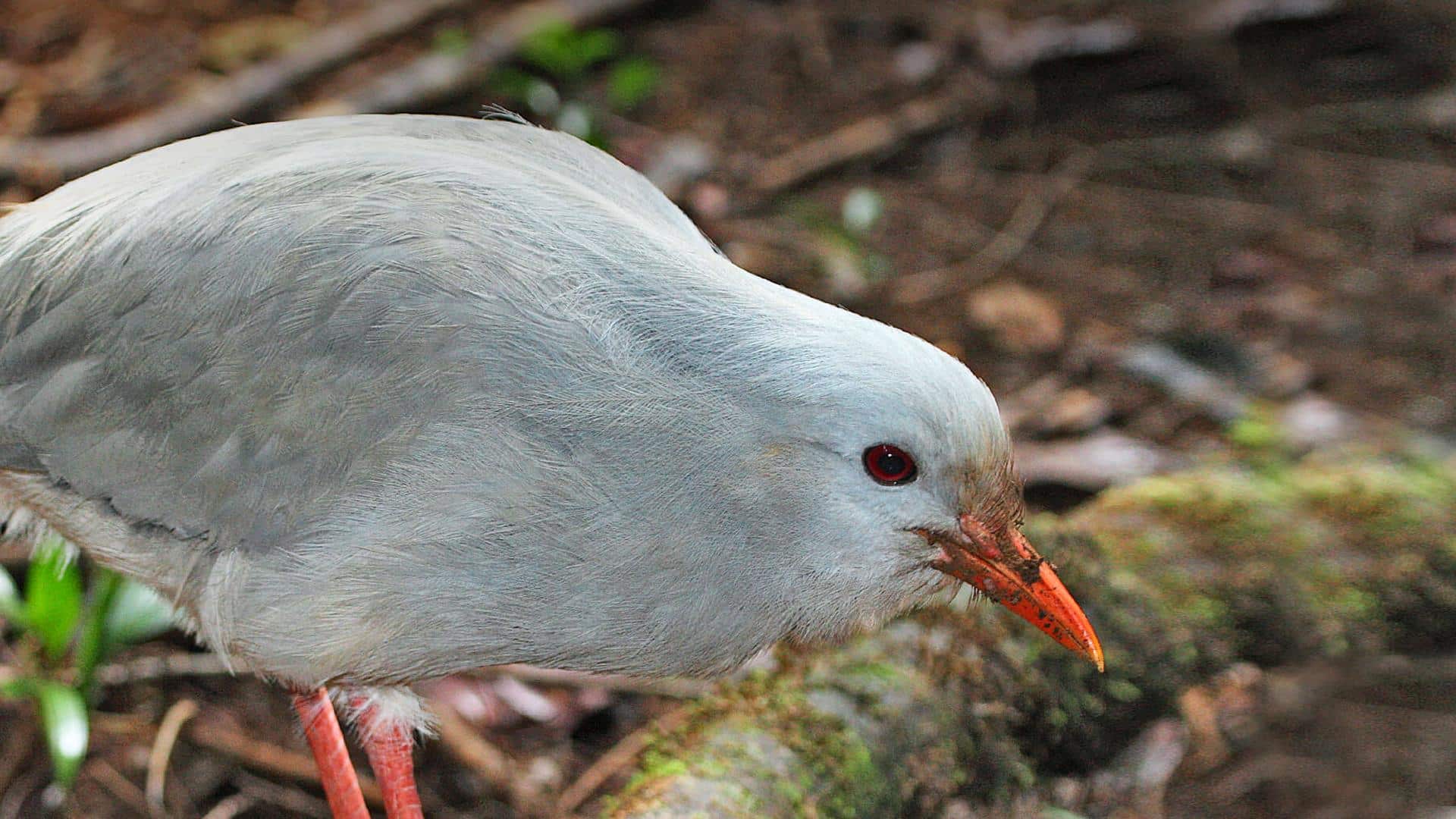
The Kagu is a rare, flightless bird with striking ash-gray plumage, a crest of feathers atop its head, and bright red legs and bill.
It measures around 55 cm (21 inches) in length and is known for its unique, almost ghostly appearance.
The Kagu is notable for its secretive nature. It is often found in dense forests, where it moves gracefully on the ground.
- Region of Habitat: Native to the dense forests of New Caledonia in the Pacific. Prefers humid, shaded environments with rich undergrowth.
- Scientific Name:Rhynochetos jubatus
- Feeding Habits: Carnivorous, primarily feeding on insects, worms, and small vertebrates found in leaf litter.
- What Sound They Make: They produce a series of soft, hooting calls and occasional hissing sounds to communicate territory or warn others of danger.
Fun Fact: The Kagu has powder-down feathers that help it remain waterproof in wet forest conditions. This unique adaptation allows it to maintain its sleek appearance despite the humid environment.
It is also the only bird with nasal flaps covering its nostrils, which help keep out debris while foraging on the forest floor.
2. Kakapo
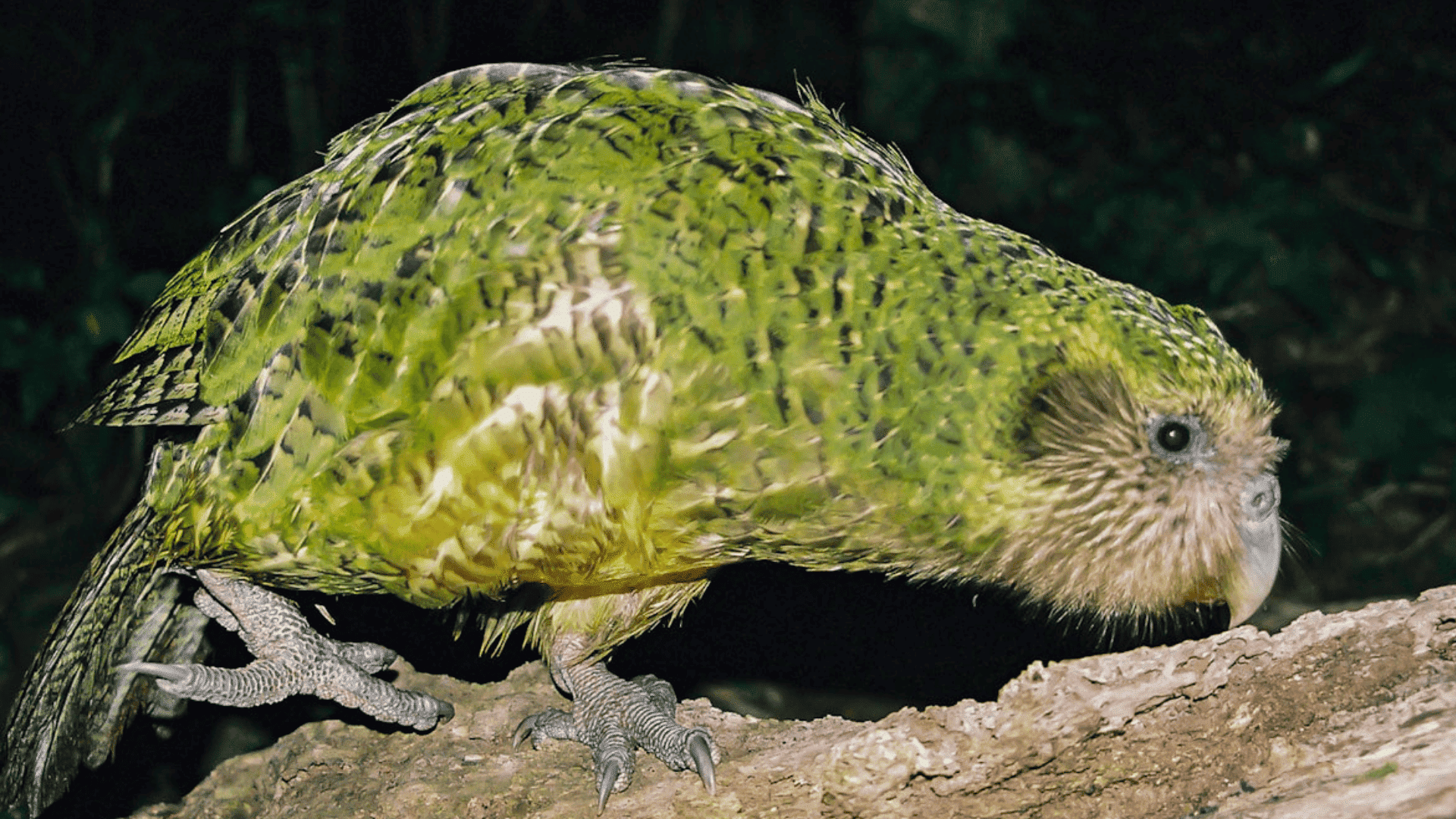
The Kakapo, also known as the owl parrot, is a large, nocturnal, flightless parrot with moss-green plumage, a round face, and a distinctive musty odor.
It can grow up to 60 cm (24 inches) long and weigh around 3 kg (6.6 lbs), making it the heaviest parrot in the world.
- Region of Habitat: Endemic to New Zealand, found in predator-free sanctuaries and dense forests.
- Scientific Name:Strigops habroptilus
- Feeding Habits: Herbivorous, feeding primarily on leaves, bark, seeds, fruits, and native rimu tree berries.
- What Sound They Make: Males produce deep, resonant “booming” calls during mating season, which can carry for kilometers.
Fun Fact: The Kakapo is one of the longest-living bird species, with some individuals reaching over 90 years.
This remarkable lifespan makes it an avian rarity. Its unique, musky scent helps researchers track them in the wild, though it also makes them easier targets for predators.
3. Kalahari Lion
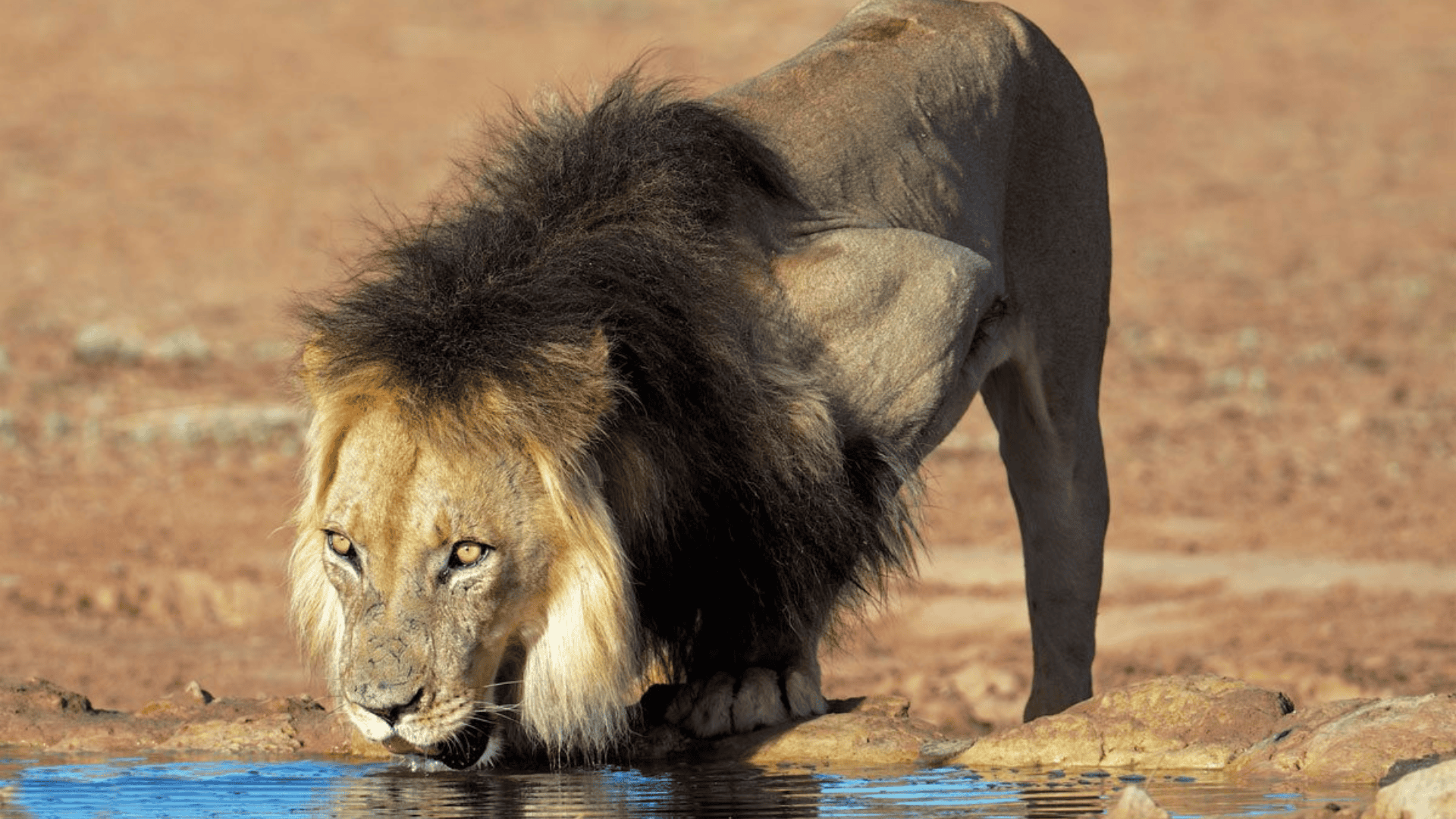
The Kalahari Lion is a subspecies of the African lion, known for its larger size, black-tipped mane, and ability to survive in arid conditions.
Males can weigh up to 214 kg (472 lbs) and have a lighter golden coat, helping them blend into the desert landscape.
- Region of Habitat: Found in the Kalahari Desert, spanning Botswana, Namibia, and South Africa. Adapted to semi-arid environments.
- Scientific Name:Panthera leo vernayi
- Feeding Habits: Carnivorous, preying on antelopes, zebras, and smaller mammals. Can go days without water, getting moisture from prey.
- What Sound They Make: Deep roars that can travel up to 8 km (5 miles) to communicate territory and call pride members.
Fun Fact: Kalahari Lions have adapted to hunting at night to avoid the extreme desert heat. This nocturnal behavior helps them conserve energy while giving them an advantage in hunting.
Unlike other lions, they have been observed scavenging more frequently due to food scarcity, making them more resourceful survivors in the harsh desert environment.
4. Kiwi
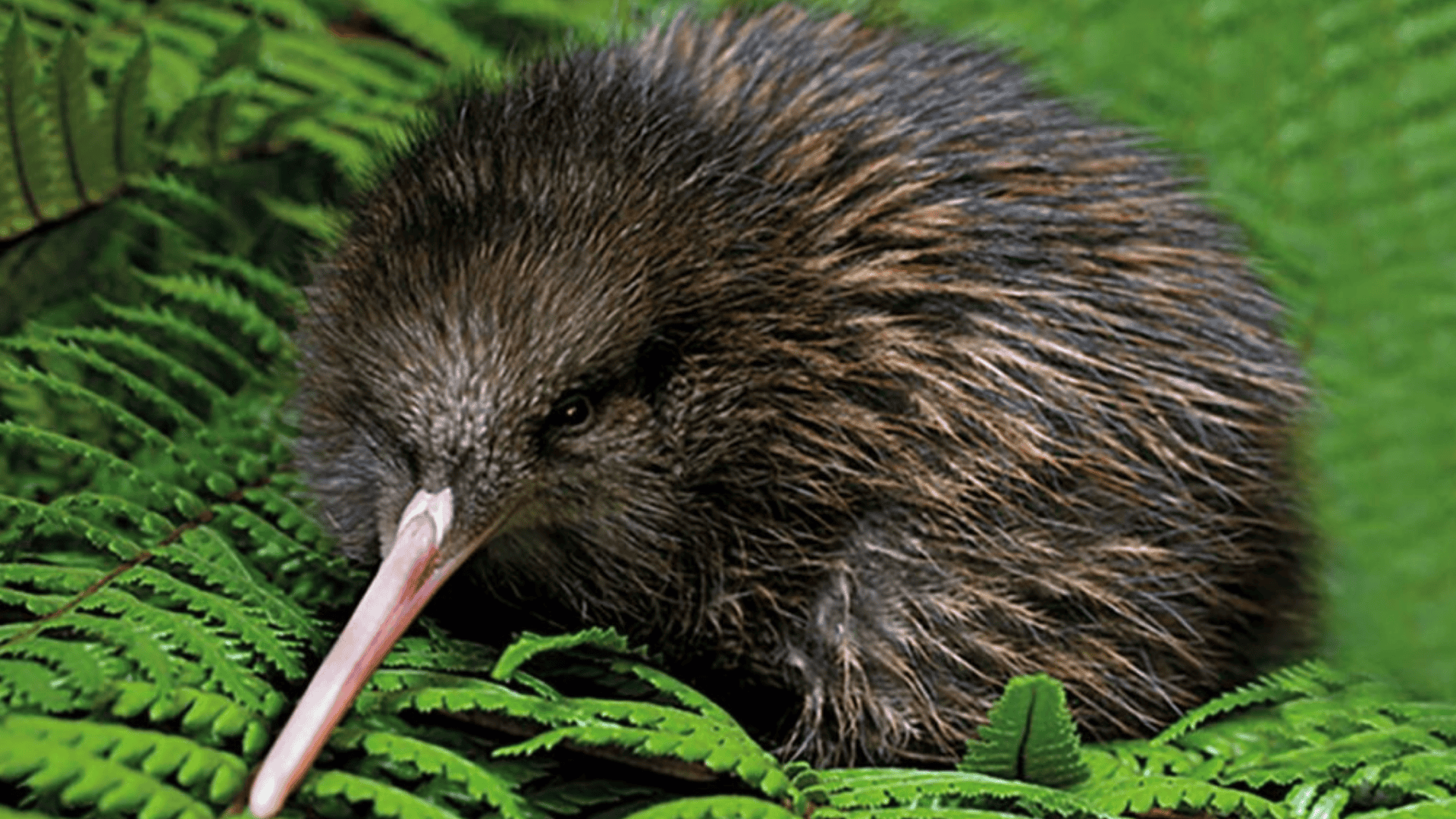
The Kiwi is a small, flightless bird with brown, shaggy feathers and a long, curved beak with nostrils at the tip. It is about the size of a chicken, measuring around 45 cm (18 inches) and weighing up to 3.2 kg (7 lbs).
- Region of Habitat: Endemic to New Zealand, found in forests, grasslands, and shrublands. Prefers burrowing into soft soil.
- Scientific Name:Apteryx (various species)
- Feeding Habits: Omnivorous, eating worms, insects, berries, and seeds. Uses its long beak to probe the ground for food.
- What Sound They Make: Males produce a high-pitched whistle, while females make a gruff growling sound.
Fun Fact: The Kiwi lays the largest egg relative to body size of any bird species. Despite its small frame, the egg can take up nearly 20% of the female’s body weight, making it one of the most physically demanding reproductive processes in birds.
Despite being flightless, it has powerful legs for digging and running, which help it evade predators and create deep burrows for nesting.
5. Killifish
Killifish are small, colorful freshwater fish known for their adaptability and short lifespan. They range in size from 6-20cm, depending on the species, and come in vibrant colors like blue, red, and yellow.
They are often found in temporary water bodies, making them highly resilient to environmental changes.
- Region of Habitat: Found in freshwater habitats across Africa, South America, and parts of North America, including ponds, streams, and seasonal pools.
- Scientific Name:Cyprinodontiformes (various species)
- Feeding Habits: Omnivorous, feeding on small insects, plankton, crustaceans, and plant material. Some species specialize in consuming mosquito larvae.
- What Sound They Make: Killifish do not produce audible sounds, but they communicate through body movements and fin displays.
Fun Fact: Some species of Killifish lay eggs that can survive months of drought by entering a state of suspended development until rain refills their habitat.
This unique survival strategy, known as diapause, allows them to thrive in harsh environments. Killifish are also known for their bright colors, which make them popular in the aquarium trade.
6. Kamchatka Brown Bear
The Kamchatka Brown Bear is one of the largest subspecies of brown bears, growing up to 3 meters (9.8 feet) in length and weighing between 270 and 650 kg (600–1,430 lbs).
It has a thick, shaggy coat that varies in color from light brown to dark chocolate, helping it blend into its environment.
- Region of Habitat: Found in the Kamchatka Peninsula of Russia, inhabiting forests, mountains, and river valleys.
- Scientific Name:Ursus arctos beringianus
- Feeding Habits: Omnivorous, with a diet consisting of salmon, berries, roots, and occasionally small mammals or carrion.
- What Sound They Make: Growls, roars, and grunts to communicate aggression, fear, or mating calls.
Fun Fact: Kamchatka Brown Bears are exceptional salmon hunters. They often gather in large numbers at rivers during spawning season.
Their thick fur and fat reserves help them survive the harsh Siberian winters, where they hibernate for several months to conserve energy.
7. Kangaroo
Kangaroos are large marsupials recognized for their powerful hind legs, long tails, and ability to leap great distances.
Depending on the species, they can grow up to 2 meters (6.5 feet) in height and weigh between 18 and 100 kg (40–220 lbs). Their strong legs allow them to reach speeds of 70 km/h (43 mph) and cover over 9 meters (30 feet) in a single bound.
- Region of Habitat: Native to Australia, found in grasslands, forests, and desert areas.
- Scientific Name:Macropus (various species)
- Feeding Habits: Herbivorous, feeding on grasses, leaves, and shrubs. They can survive long periods without water by extracting moisture from their food.
- What Sound They Make: Males produce low, guttural coughs when competing for mates, while females communicate with their young through clicking sounds.
Fun Fact: A baby kangaroo, called a joey, is born the size of a jellybean and continues developing in its mother’s pouch for several months.
Unlike most animals, kangaroos cannot walk backward due to the structure of their hind legs and large tail, making them symbols of forward movement in Australian culture.
8. Koala
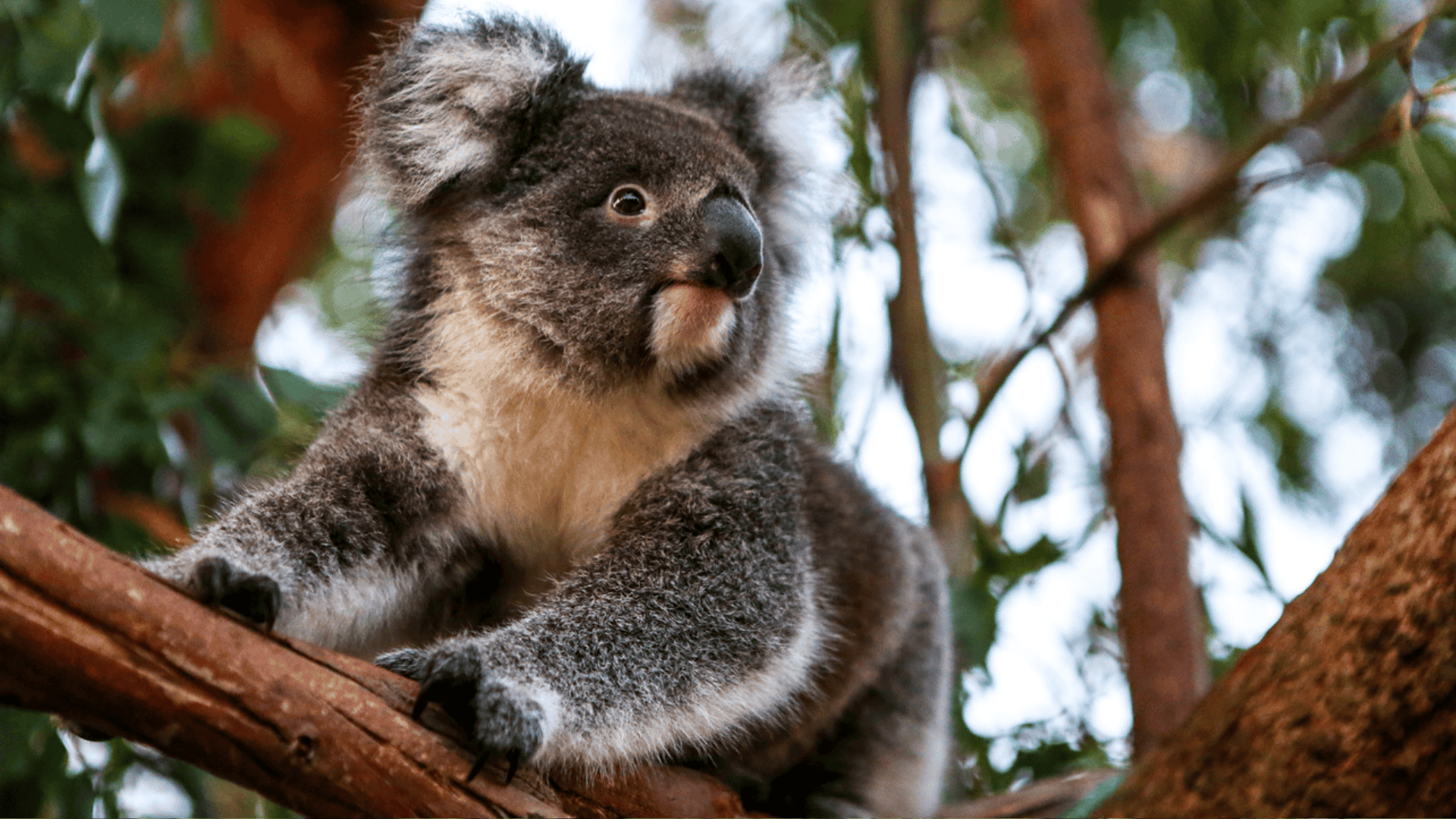
Koalas are small, tree-dwelling marsupials with thick gray fur, round ears, and a distinctive black nose. They grow up to 85 cm (33 inches) in length and weigh between 4 and 15 kg (9–33 lbs).
Their strong limbs and sharp claws allow them to grip tree branches securely as they move from tree to tree.
- Region of Habitat: Native to Australia, found in eucalyptus forests along the eastern and southern coasts.
- Scientific Name:Phascolarctos cinereus
- Feeding Habits: Herbivorous, feeding almost exclusively on eucalyptus leaves, which provide both nutrients and hydration.
- What Sound They Make: Koalas produce deep, bellowing grunts, particularly during mating season, to establish dominance and attract mates.
Fun Fact: Koalas sleep up to 20 hours a day due to their low-energy diet of eucalyptus leaves, which are difficult to digest.
Despite their cuddly appearance, koalas have sharp claws and strong jaws that can deliver a painful bite when threatened.
9. Kangaroo Rat
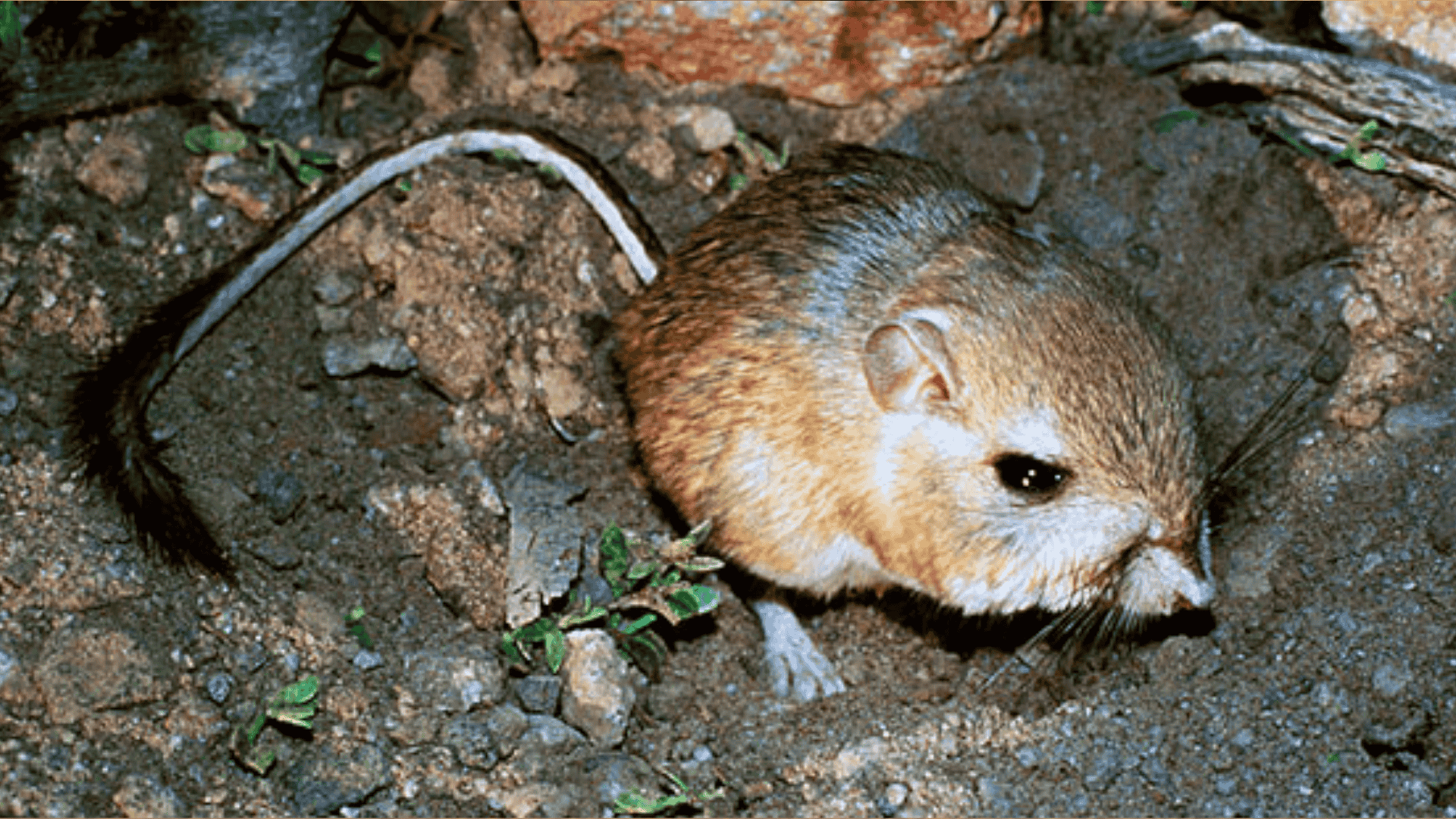
The Kangaroo Rat is a small, nocturnal rodent with large hind legs, a long tail, and fur-covered cheek pouches for carrying food.
It typically measures between 8 and 20cm in length, with an additional tail length of 15 cm (6 inches). Its powerful legs allow it to jump distances of over 2 meters (6.5 feet) in a single leap.
- Region of Habitat: Found in arid and desert areas of North America, particularly in the southwestern United States and Mexico.
- Scientific Name:Dipodomys (various species)
- Feeding Habits: Granivorous, primarily consuming seeds and grains, which they store in underground burrows. They can survive without drinking water, extracting moisture from their food.
- What Sound They Make: Produces soft thumping sounds with its hind legs to communicate territory and warn of predators.
Fun Fact: Kangaroo Rats have highly efficient kidneys that allow them to conserve water, making them perfectly adapted to desert life.
They can live their entire lives without ever drinking liquid water, getting all necessary hydration from their food.
10. King Cobra
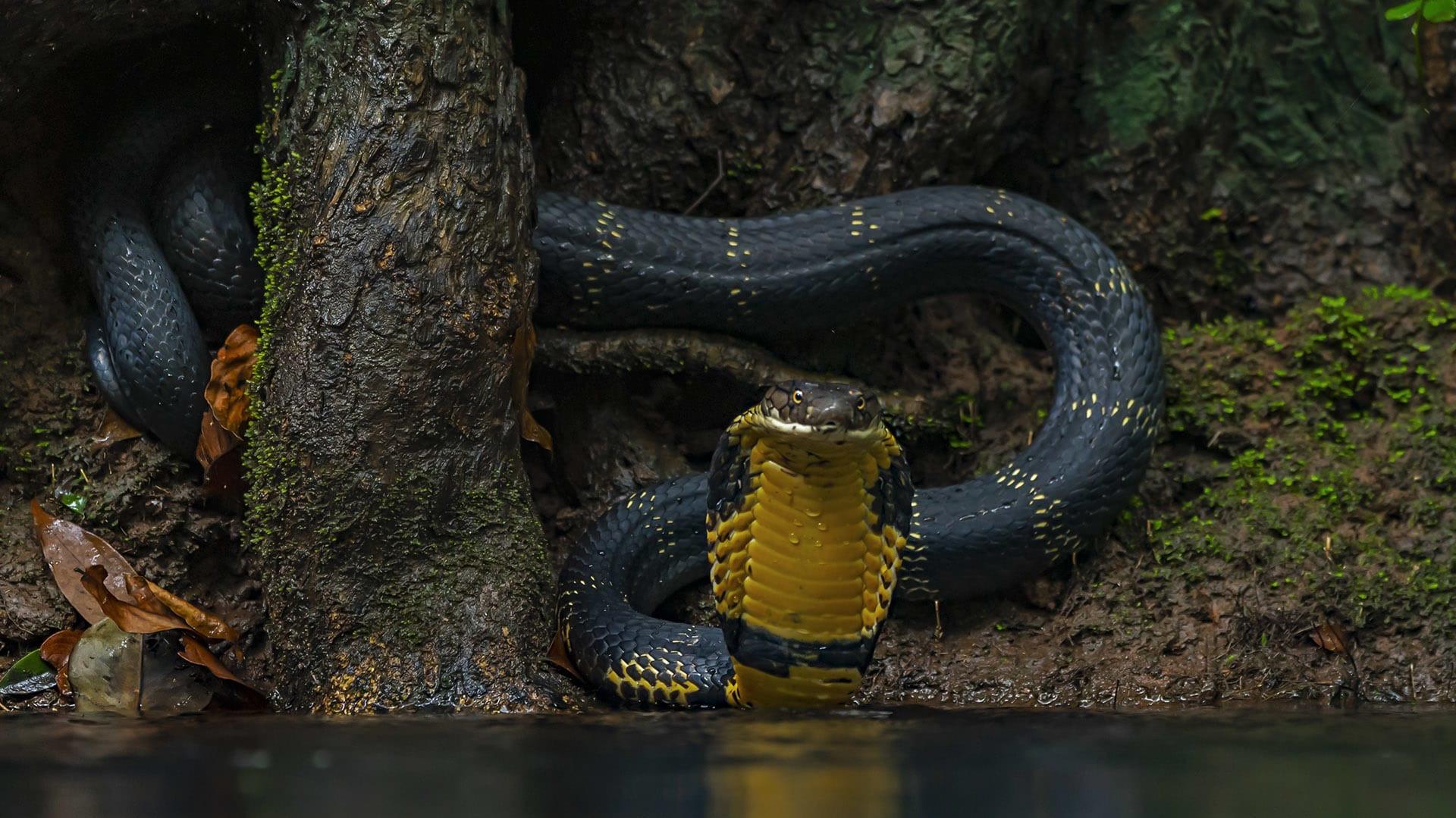
The King Cobra is the world’s longest venomous snake, reaching lengths of up to 5.5 meters (18 feet).
It has a distinct hood that flares when threatened and can stand up to a third of its body length off the ground in a defensive posture. Its scales are typically olive green, black, or tan with pale bands.
- Region of Habitat: Found in forests, grasslands, and swamps across South and Southeast Asia, including India, China, and Indonesia.
- Scientific Name:Ophiophagus hannah
- Feeding Habits: Carnivorous, primarily preying on other snakes, but also consuming lizards, rodents, and birds.
- What Sound They Make: Produces a deep, growling hiss that is much lower in frequency than most snake hisses, creating an intimidating sound.
Fun Fact: Unlike other snakes, the King Cobra can “stand” and look a person in the eye when threatened, making it one of the most intimidating reptiles.
It is also the only snake species that builds nests for its eggs, with females fiercely guarding them until they hatch.
11. Karner Blue Butterfly
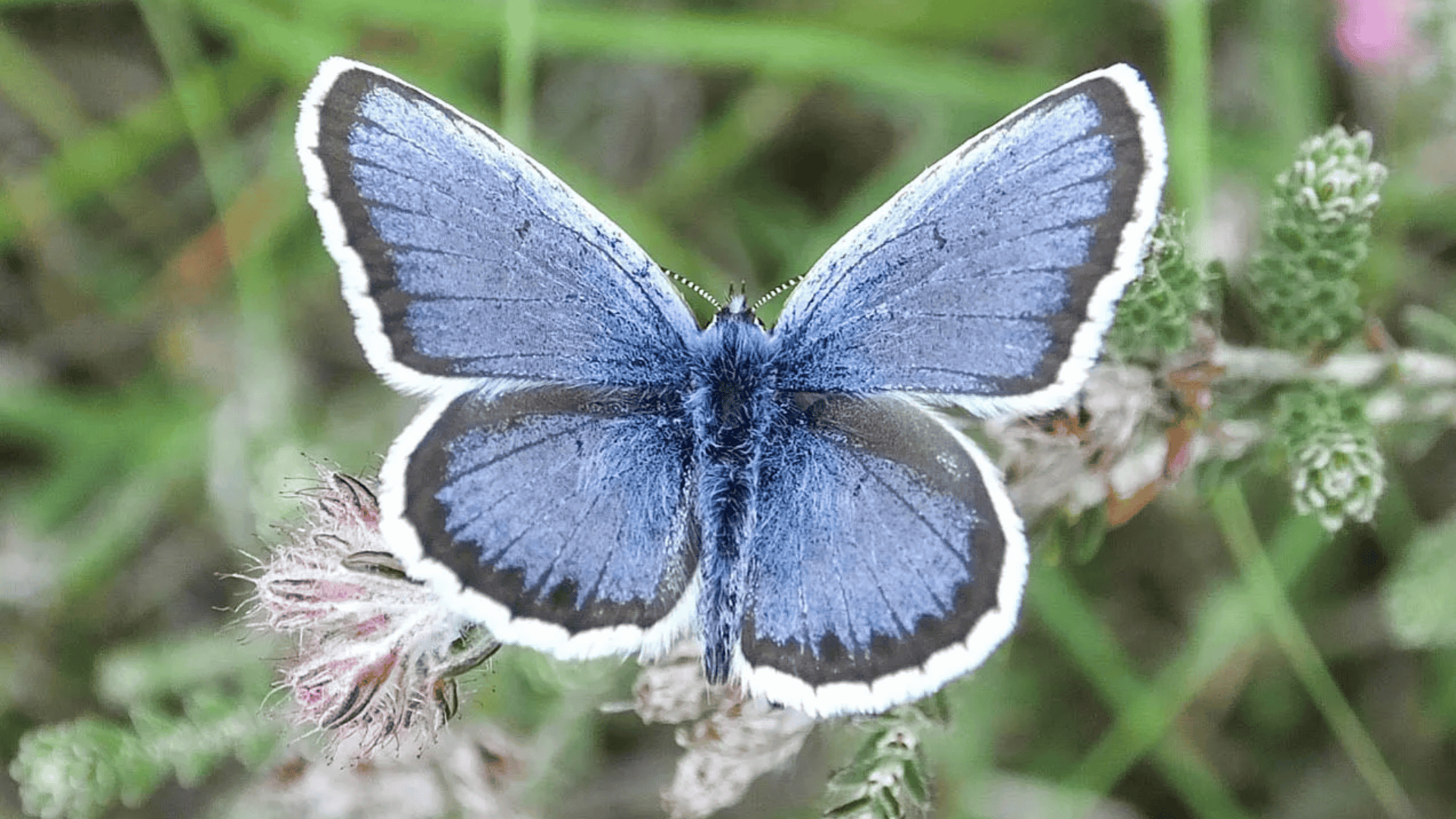
The Karner Blue Butterfly is a small, vibrant butterfly with a wingspan of about 2.5 to 3 cm (1 to 1.2 inches). Males have bright blue upper wings with a black border, while females are more brownish with a slight blue tint.
This species is known for its exquisite, iridescent appearance and its close relationship with wild lupine plants.
- Region of Habitat: Found in the northeastern and midwestern United States, particularly in pine barrens and dry sandy grasslands.
- Scientific Name:Plebejus samuelis
- Feeding Habits: The larvae feed exclusively on wild lupine leaves, while adults consume nectar from various flowering plants.
- What Sound They Make: Butterflies do not produce sounds, but Karner Blue Butterflies communicate through subtle wing movements and pheromones.
Fun Fact: The Karner Blue Butterfly depends entirely on wild lupine for survival, making it highly sensitive to habitat destruction. Conservation efforts have been ongoing to protect this species, as it is listed as endangered in the United States.
12. Kashmir Deer
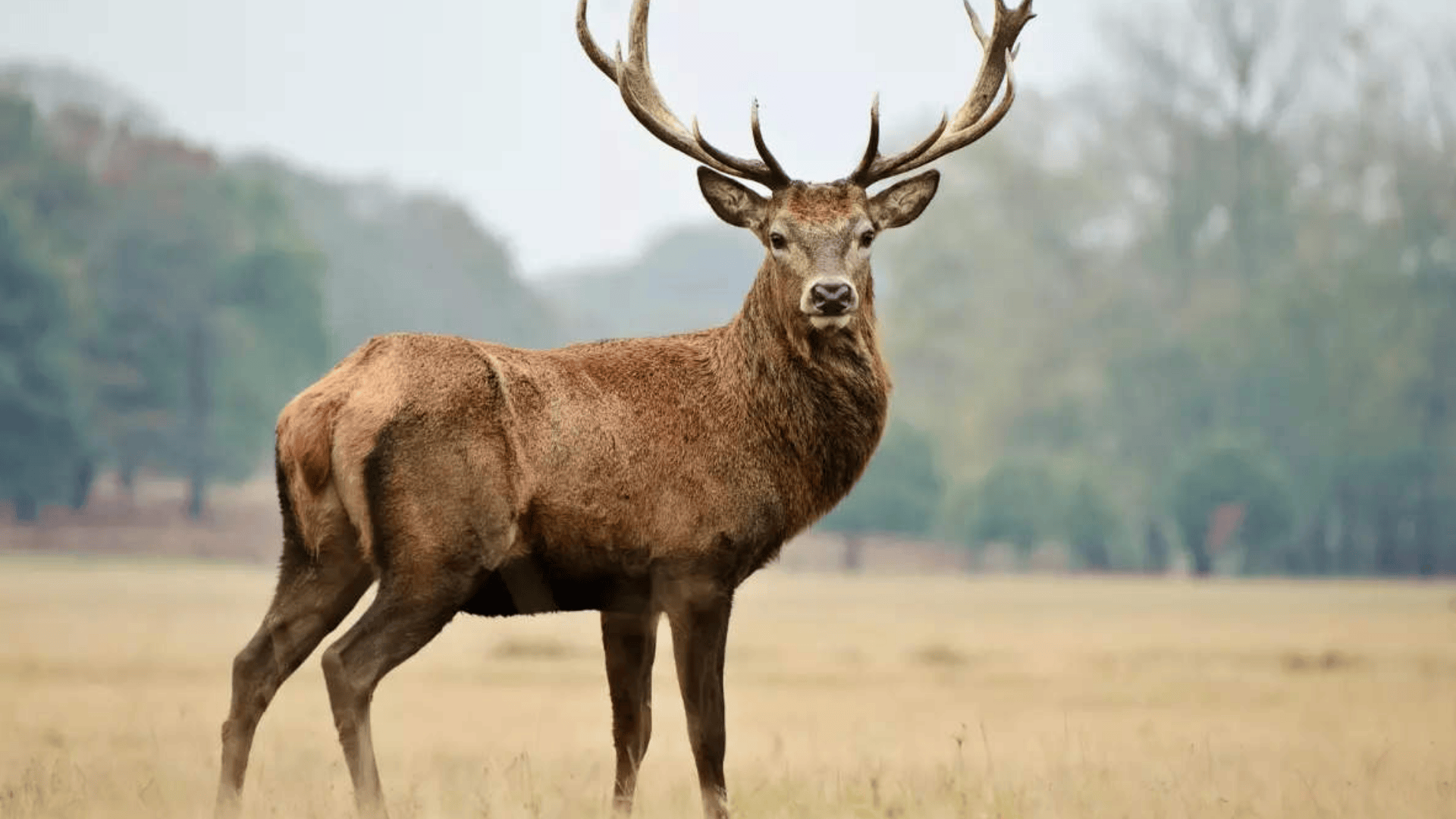
The Kashmir Deer, also known as the Hangul, is a medium-sized deer with a reddish-brown coat and impressive antlers in males, which can grow up to 1 meter (3.3 feet) long.
This species is highly elusive and is adapted to cold mountainous regions.
- Region of Habitat: Native to the Kashmir Valley and parts of northern India, often found in dense forests and high-altitude meadows.
- Scientific Name:Cervus hanglu
- Feeding Habits: Herbivorous, feeding on leaves, grass, and shrubs. During winter, it browses on tree bark and twigs.
- What Sound They Make: Males produce loud, reverberating bugle calls during the mating season to attract females and challenge rivals.
Fun Fact: The Kashmir Deer is one of the rarest deer species in the world, with fewer than 300 individuals left in the wild. Conservation programs aim to protect their dwindling population due to habitat loss and poaching.
13. Kashmir Musk Deer
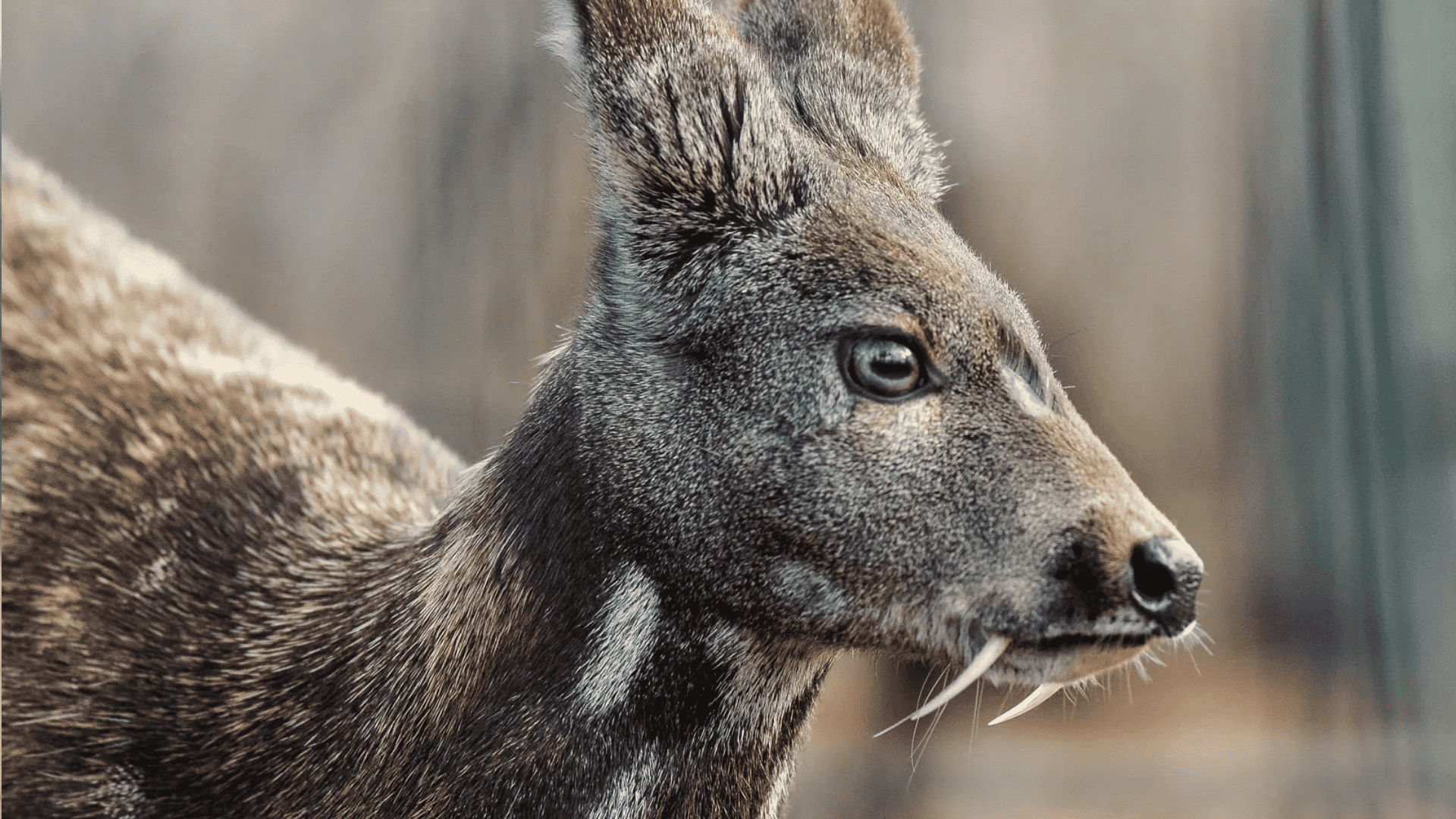
The Kashmir Musk Deer is a small, secretive deer species with a grayish-brown coat and large, fang-like upper canine teeth used by males for territorial battles.
It measures about 60–100 cm (24–39 inches) in length and weighs between 7–17 kg (15–37 lbs).
- Region of Habitat: Found in the Himalayan forests of India, Nepal, and Pakistan, thriving in rocky, rugged terrain.
- Scientific Name:Moschus cupreus
- Feeding Habits: Herbivorous, primarily consuming moss, lichens, leaves, and flowers.
- What Sound They Make: Produces soft bleating sounds, mainly during mating season or when distressed.
Fun Fact: The Kashmir Musk Deer’s musk gland is highly valuable in the perfume industry, leading to rampant poaching. To avoid predators, this species remains motionless for long periods, blending seamlessly into its surroundings.
14. Keelback Snake
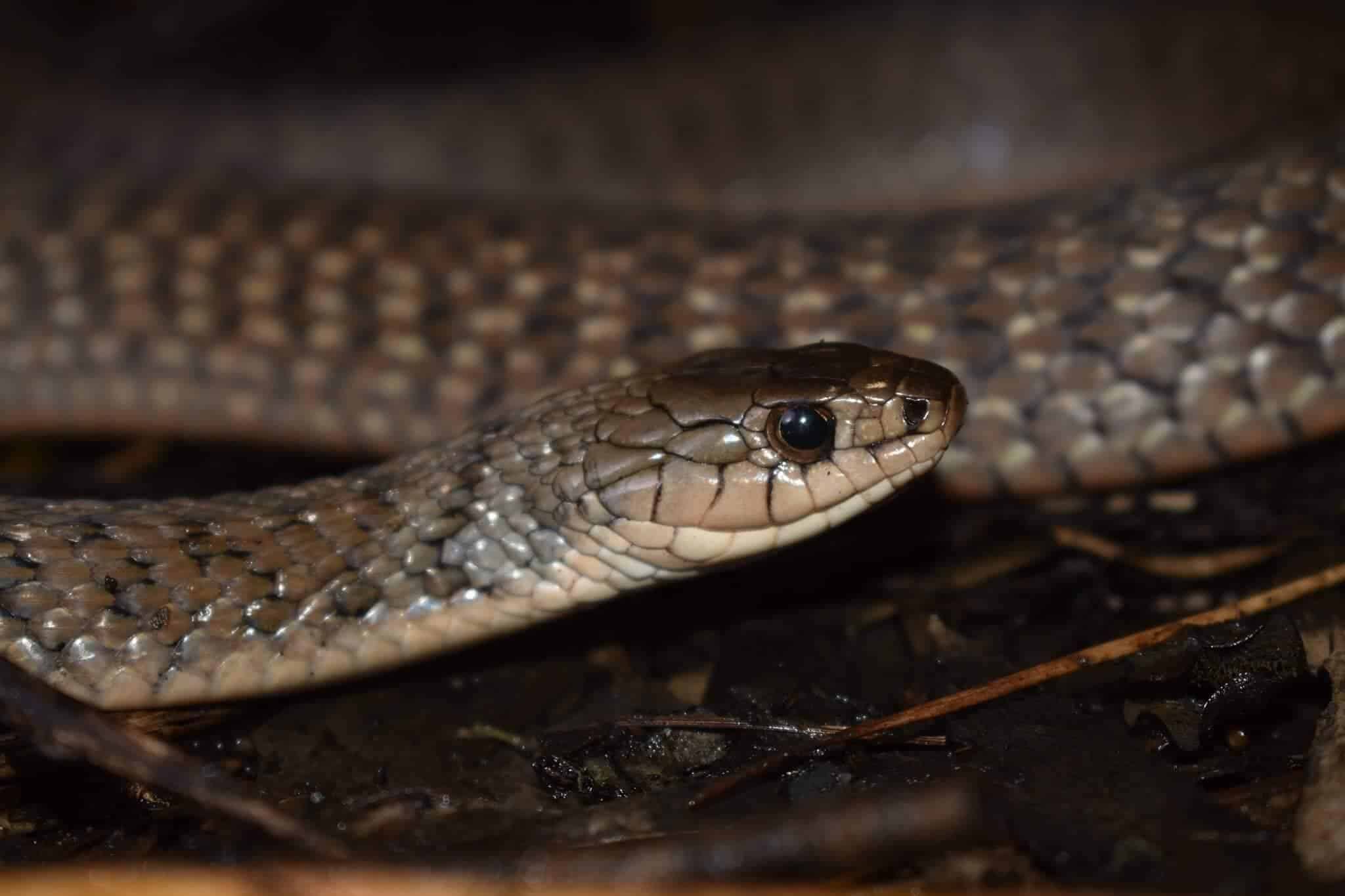
The Keelback Snake is a non-venomous, semi-aquatic snake with a slender body covered in keeled scales that give it a rough texture.
It can grow between 60 and 100 cm (24–39 inches) in length and has a color pattern that varies from brown to greenish-gray.
- Region of Habitat: Found in wetlands, rice fields, and slow-moving waters across Southeast Asia, India, and Australia.
- Scientific Name:Rhabdophis (various species)
- Feeding Habits: Carnivorous, preying on fish, frogs, and small amphibians. Some species are known to eat toxic toads and store the poison in their own bodies as a defense mechanism.
- What Sound They Make: Generally silent but can produce a faint hissing sound when threatened.
Fun Fact: The Keelback Snake is one of the few snakes that can safely consume poisonous toads without suffering harm.
Some species even store toxins from their prey in their neck glands, making them unpalatable to predators.
15. Katanga Lion
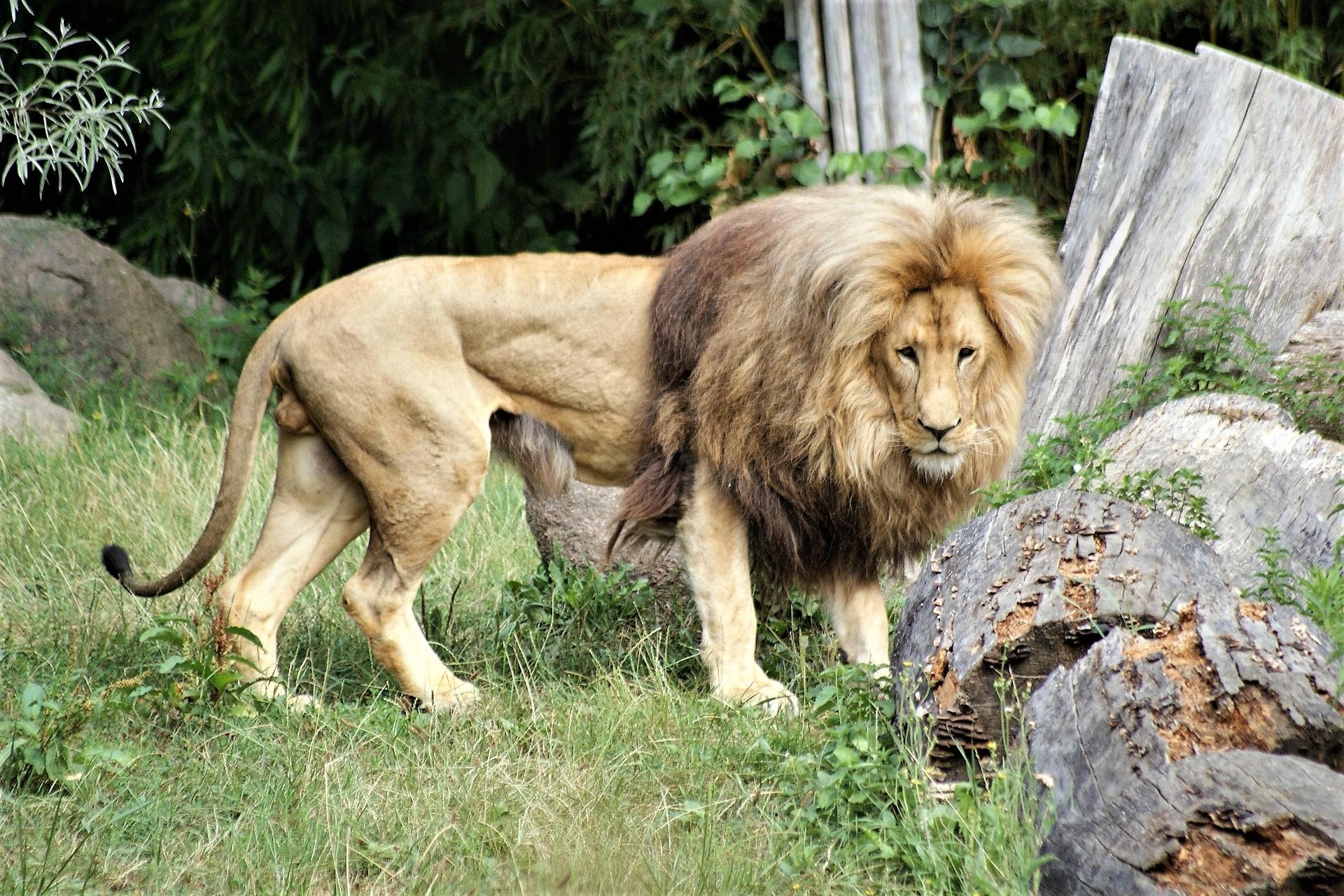
The Katanga Lion is one of the largest lion subspecies, with males weighing up to 250 kg (550 lbs) and sporting a thick mane that ranges from golden to dark brown.
This lion is known for its strong build and dominance in the savannah ecosystem.
- Region of Habitat: Found in southern Africa, particularly in Angola, Zambia, and the Democratic Republic of Congo. Prefers open grasslands and woodlands.
- Scientific Name:Panthera leo bleyenberghi
- Feeding Habits: Carnivorous, primarily hunting large ungulates such as zebras, antelopes, and buffalos.
- What Sound They Make: Emits deep, thunderous roars that can be heard up to 8 km (5 miles) away.
Fun Fact: Katanga Lions have a social structure where females do most of the hunting, while males defend the territory. They can go several days without drinking water by extracting moisture from their prey.
16. Katydid
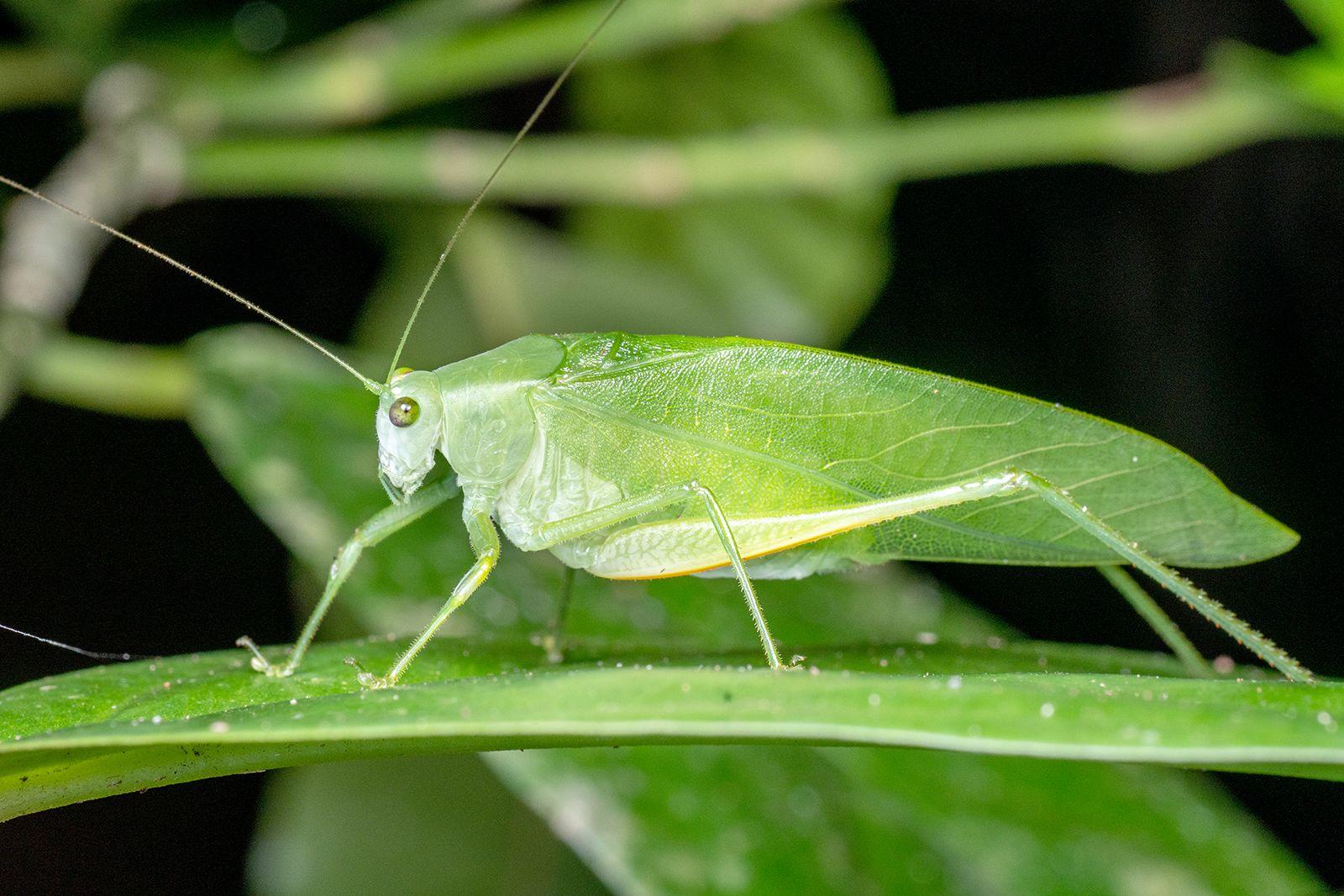
Katydids are large, green, leaf-mimicking insects that belong to the grasshopper family. They typically measure between 2.5 and 5 cm (1–2 inches) in length and have long antennae that extend beyond their body length.
- Region of Habitat: Found in tropical and temperate forests worldwide, particularly in South America, Asia, and Australia.
- Scientific Name:Tettigoniidae (various species)
- Feeding Habits: Primarily herbivorous, feeding on leaves, flowers, and fruit, though some species are omnivorous.
- What Sound They Make: Males produce a loud, rhythmic “katy-did, katy-didn’t” sound by rubbing their wings together to attract mates.
Fun Fact: Katydids have excellent camouflage, resembling leaves to avoid predators. Some species can even change color slightly to match their surroundings, making them nearly invisible to the naked eye.
17. Kawa Fish
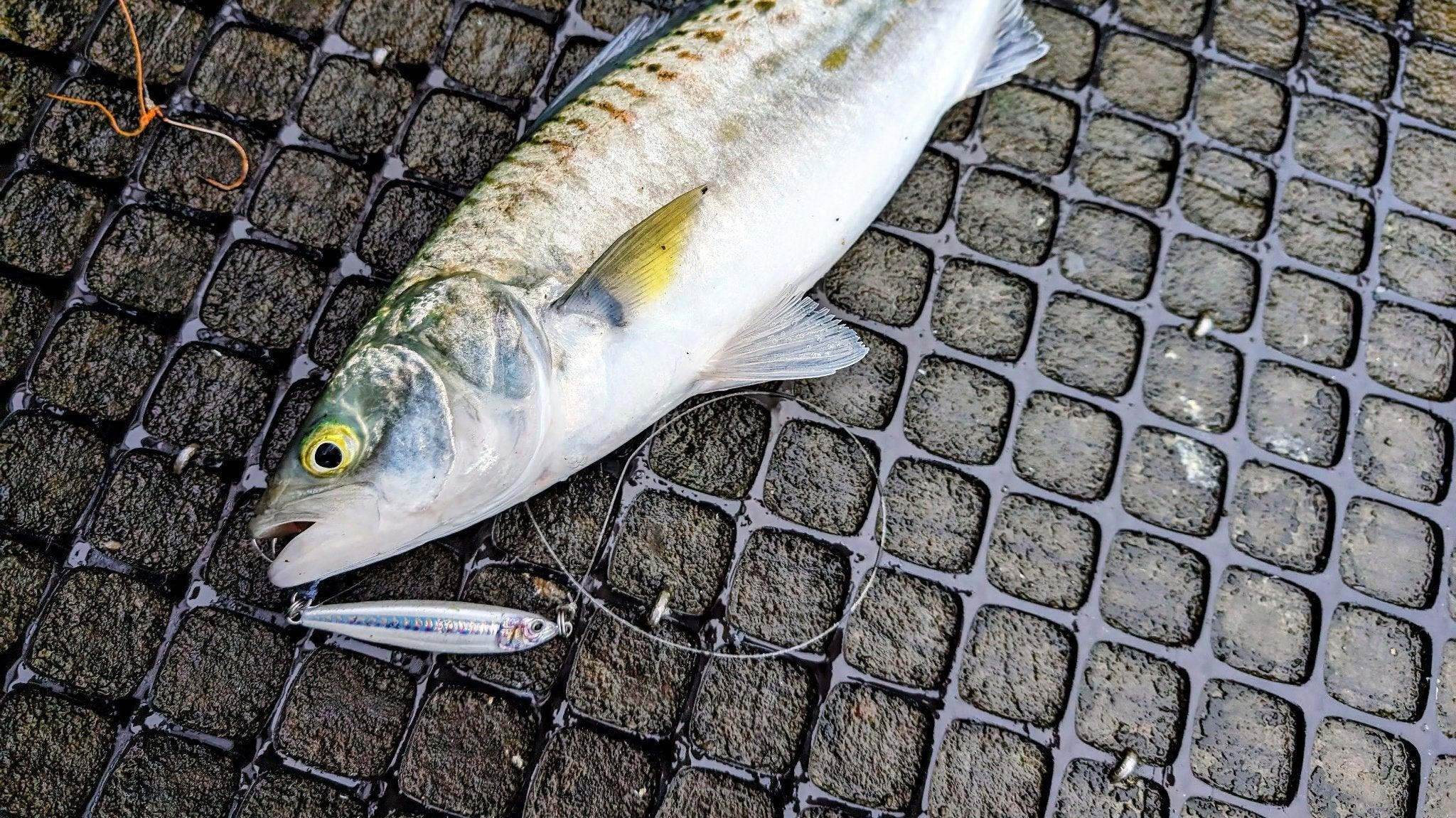
The Kawa Fish is a small, brightly colored freshwater fish known for its iridescent scales that shimmer under sunlight. It can grow up to 15 cm (6 inches) in length and has a streamlined body adapted for swift water movements.
- Region of Habitat: Native to fast-flowing rivers and streams in Japan and Southeast Asia.
- Scientific Name:Hypseleotris kawaensis
- Feeding Habits: Carnivorous, feeding on small invertebrates, insect larvae, and plankton.
- What Sound They Make: While generally silent, they produce faint clicking noises when interacting with other fish.
Fun Fact: Kawa Fish are highly territorial and will aggressively defend their feeding grounds from intruders.
They are also known for their ability to guide through shallow rapids with ease, making them unique among river fish.
18. Kazakh Barb
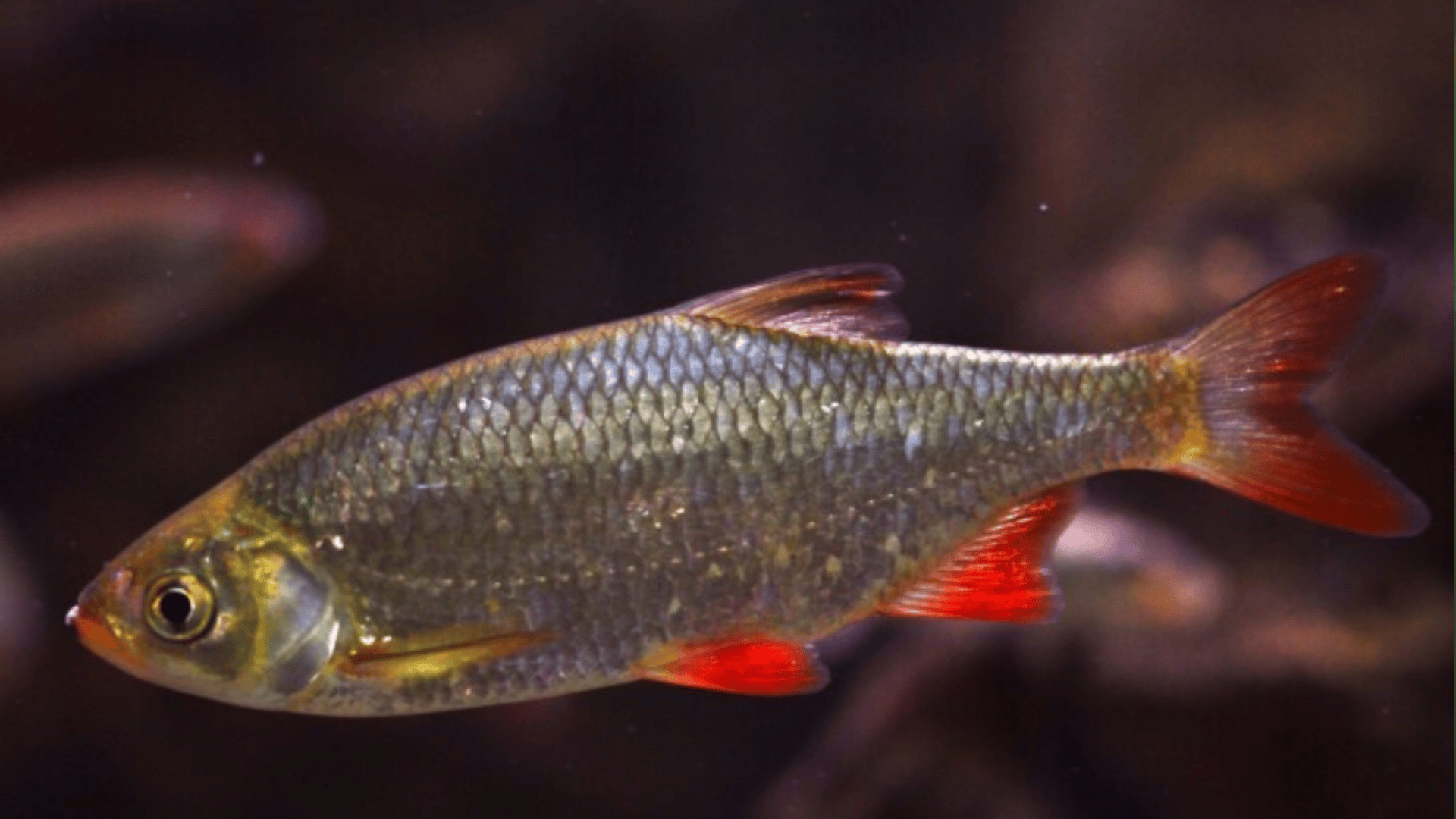
The Kazakh Barb is a species of freshwater fish with a torpedo-shaped body and silvery-yellow scales. It typically grows up to 25 cm (10 inches) and has a distinctive forked tail that aids in rapid swimming.
- Region of Habitat: Found in rivers and lakes across Central Asia, particularly in Kazakhstan and surrounding regions.
- Scientific Name:Barbus kazakhstanicus
- Feeding Habits: Omnivorous, consuming algae, insects, and small crustaceans.
- What Sound They Make: They do not produce audible sounds but communicate through body movements and fin displays.
Fun Fact: The Kazakh Barb is known for its ability to survive in both fast-flowing rivers and stagnant waters, making it highly adaptable.
During the breeding season, males develop bright red and orange markings to attract females.
19. Kea
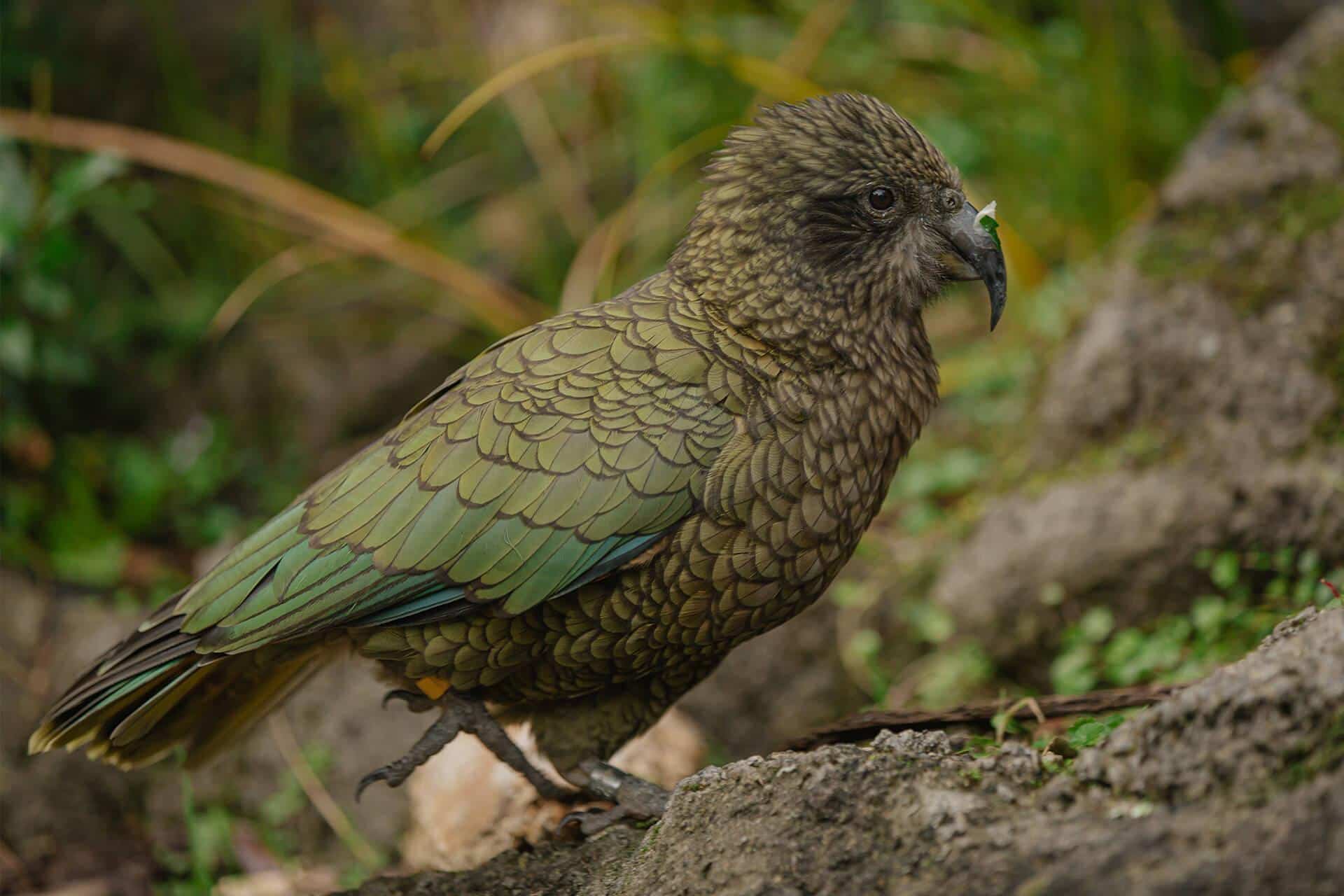
The Kea is a large, highly intelligent parrot with striking olive-green feathers, bright orange underwings, and a curved beak.
It measures about 48 cm (19 inches) in length and weighs between 750 and 1,000 grams (1.65–2.2 lbs). Known for its curiosity and problem-solving abilities, the Kea is one of the most mischievous bird species.
- Region of Habitat: Native to the mountainous regions of New Zealand’s South Island, often found in alpine forests and subalpine areas.
- Scientific Name:Nestor notabilis
- Feeding Habits: Omnivorous, feeding on fruits, seeds, nectar, insects, and even carrion. They are known to scavenge human food in populated areas.
- What Sound They Make: They produce loud, high-pitched “kee-aa” calls, which give the bird its name. They also make chuckling sounds during social interactions.
Fun Fact: The Kea is one of the few alpine parrots in the world and has been observed using tools to access food.
Its intelligence rivals that of primates, and it often interacts playfully with tourists, sometimes even stealing unattended items.
20. Keel-billed Toucan
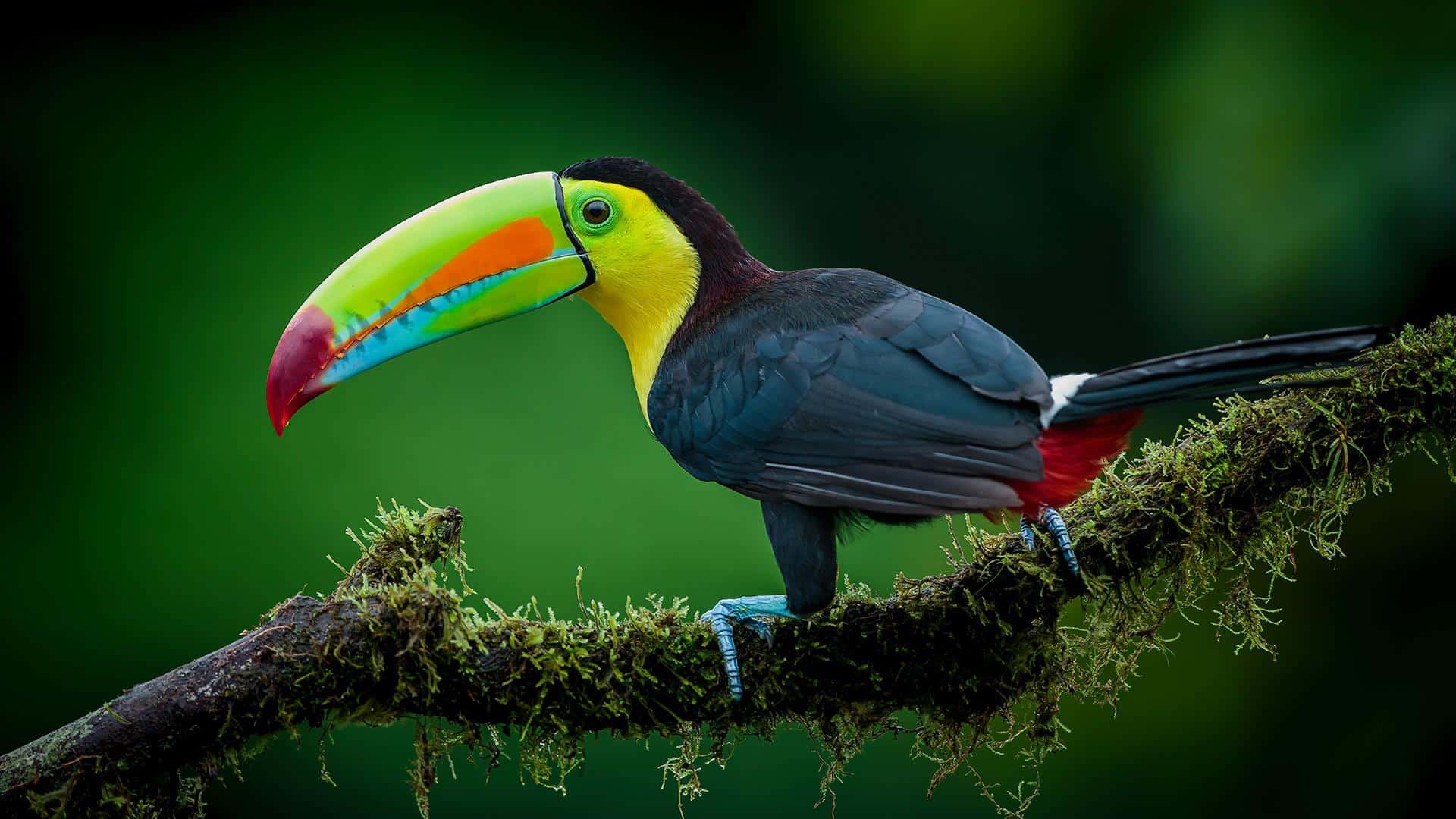
The Keel-billed Toucan is a colorful, medium-sized bird known for its oversized, multicolored bill, which can reach up to 20 cm (8 inches) long.
It has a black body, a bright yellow throat, and a green, red, and orange beak. Due to its striking appearance, this species is one of the most recognizable toucans.
- Region of Habitat: Found in the tropical rainforests of Central and South America, particularly in Mexico, Colombia, and Venezuela.
- Scientific Name:Ramphastos sulfuratus
- Feeding Habits: Omnivorous, primarily consuming fruits, but also eating insects, eggs, and small reptiles.
- What Sound They Make: They produce a series of croaking, frog-like calls that are often heard echoing through the jungle canopy.
Fun Fact: Despite its large size, the Keel-billed Toucan’s bill is extremely lightweight due to its honeycomb-like structure. It plays an important role in seed dispersal, helping maintain the balance of rainforest ecosystems.
More animals with “K”
21.Kasper Catfish
22. Keitloa (Black Rhino)
23. Kelp Bass
24. Kelp Crab
25. Kelp Goose
26. Kelp Gull
27. Kelp Perch
28. Kendari Rat
29. Kenyan Sand Boa
30. Kenyan Tree Frog
31. Kentucky Warbler
32. Kermadec Petrel
33. Kermode Bear
34. Kerry Blue Terrier
35. Keta Salmon
36. Key Deer
37. Keyhole Cichlid
38. Kharai Camel
39. Khaya Moth
40. Kiang
41. Kibale Forest Frog
42. Kihansi Spray Toad
43. Kiki Catfish
44. Killdeer
45. Kaluga Sturgeon
46. Klipspringer
47. King Baboon Spider
48. Karakul Sheep
49. King Eider
50. King Mackerel
51. King Penguin
52. King Quail
53. King Rail
54. King Salmon
55. King Vulture
56. Kingbird
57. Kingfisher
58. Kingklip
59. Kipunji
60. Kissing Gourami
61. Kit Fox
62. Kite
63. Kalahari Lion
64. Klipspringer
65. Knifefish
66. Knight Anole
67. Knobbed Hornbill
68. Knobtail Gecko
69. Knysna Turaco
70. Kangaroo Mouse
71. Koa Bug
72. Koa Finch
73. Kob
74. Kodiak Bear
75. Kodkod
76. Koepcke’s Hermit (Hummingbird)
77. Kokanee Salmon
78. Koklass Pheasant
79. Koi Fish
80. Koi Heron
81. Koi Loach
82. Kolombangara White-eye
83. Komodo Dragon
84. Kona Crab
85. Kongonaphon (Prehistoric)
86. Koodoo
87. Koolie (Dog Breed)
88. Korean Field Mouse
89. Korean Hare
90. Korean Magpie
91. Korean Pond Turtle
92. Korean Rat Snake
93. Korean Rockfish
94. Korean Water Deer
95. Korinch’s Rat
96. Kori Bustard
97. Koslov’s Long-nosed Rat
98. Kouprey
99. Kowari
100. Krill
101. Kromfohrländer
102. Kroonar (Bird)
103. Kruger Lion
104. Kua Rat
105. Kubary’s Booby
106. Kudu
107. Kuiu Island Wolf
108. Kukri Snake
109. Kulshan Salamander
110. Kumlien’s Gull
111. Kunekune Pig
112. Kunming Wolfdog
113. Kuno Forest Wolf
114. Kuno Lizard
115. Kupffer’s Glassfish
116. Kura Clam
117. Kura Loach
118. Keeltail Needlefish
119. Kuri Sheep
120. Kuroiler Chicken
121. Kuroshio Bamboo Viper
122. Kusimanse
123. Kusudama Shrimp
124. Kutum
125. Kuwai Loach
126. Kuwaiti Killifish
127. Kyathit Danio
128. Kyoto Salamander
129. Kyushu Dwarf Kingfisher
130. Kyushu Robin
131. Kyzylkum Racerunner
132. Kyrgyz Sand Lizard
133. Kyrgyz Spiny Lizard
134. Kākā
135. Kākāwahie (Extinct Bird)
136. Kākāriki
137. Kālakaua’s Swallowtail
138. Kāmao (Extinct Bird)
139. Kāhuli (Hawaiian Snail)
140. Kāmau (Hawaiian Goby)
141. Kānaka (Hawaiian Shrimp)
142. Kāneloa Crab
143. Kāwili (Hawaiian Limpet)
144. Käärmelohi (Snake Salmon)
145. Käpylä Wolf
146. Käpylä Weasel
147. Käpylä Lemming
148. Käpylä Frog
149. Käpylä Newt
150. Käpylä Skink
151. Käpylä Shrew
152. Käpylä Moth
153. Käpylä Wasp
154. Käpylä Swallowtail
155. Käpylä Owl
156. Käpylä Heron
157. Käpylä Parrot
Wrapping Up
The world of animals beginning with the letter “K” is filled with remarkable diversity—from the well-known kangaroo to the unavailable kinkajou.
These creatures, found across various ecosystems, highlight the richness of our planet’s biodiversity and the significance of conservation.
Learning about their habitats, unique behaviors, and ecological roles, one develops a deeper appreciation for the intricate balance of nature. Each species plays a crucial role in maintaining the natural world.
This blog aims to spark curiosity and a greater appreciation for wildlife. The next time a kingfisher, koala, or katydid appears, it’s an opportunity to recognize not just its name but the adaptations that make each animal truly extraordinary.
If you’re interested in more informative animal and wildlife content, feel free to click here and explore other blogs that you might enjoy!

